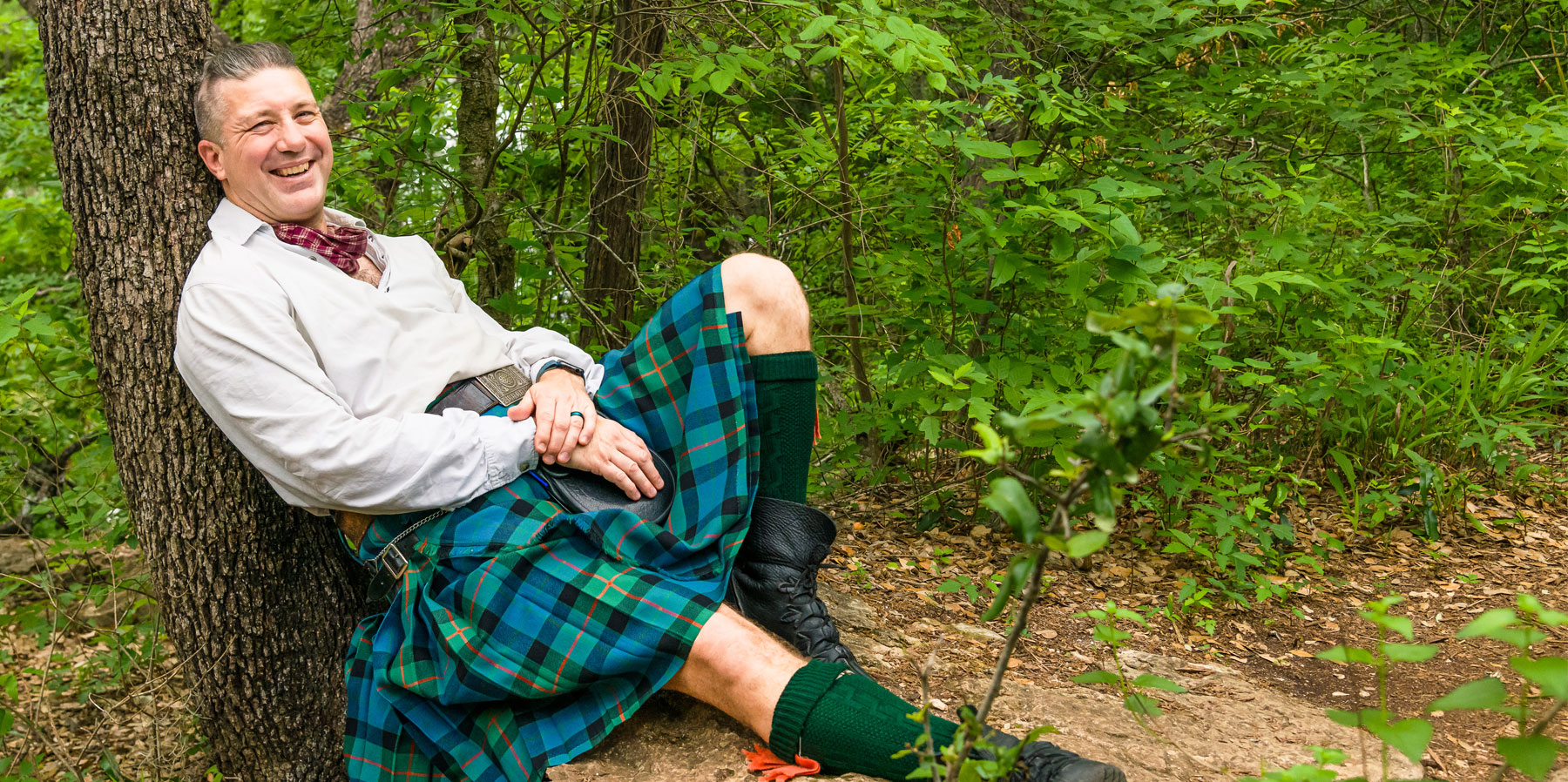From the Celtic History Newsletter:
Last month I said I was going to continue my discussion of Celtic crosses, but with summer here and the Highland games / Renaissance fair / reenactment season here I thought it would be a good time write something lighter and to share a few tips for people who are trying to wear a kilt for the first time. Back to the crosses next month.
Andrew MacGregor?s Tips for New Kilt Wearers…
New to wearing a kilt? Start watching women in short skirts (-well more than you already do…) to study how they move while sitting down to avoid exposing themselves. You can learn some tips by following their example. That sweep of the hands underneath you as you sit can not only prevent embarassment, but protect you from surprises like cold/hot surfaces not to mention splinters.
Planning on buying/wearing a great kilt/belted plaid? Don't listen to the people who try to tell you that you need 9 yards of 60′ wide material. All you need is 4-6 yards depending on your size and the pattern of the tartan. The idea of 9 yards comes from a misconception because the cloth for a belted plaid was only around 25′ wide, depending on the size of the loom that was used to weave it. A 9 yard length of cloth was cut in half, and then the selvedge (long) edges were stitched together, resulting in a piece fabric only about four and a half yards long and 50 (or so) inches wide. See this article by Matthew A. C. Newsome (Member of the International Guild of Tartan Scholars, curator of the Scottish Tartans Museum) for more discussion of the matter. For the people that tell you that the phrase “The whole nine yards” refers to the belted plaid see this article for all the other supposed explanations of that phrase.
A site with step-by-step pictures of pleating a great kilt.
Chafing. Yes, there is a certain esprit de corps about being regimental, but on a hot, humid day even us skinny guys can suffer. So if you are out on a hot/humid day you are NOT any less manly a Scot if you save yourself some pain by wearing some bike shorts, or boxers. Briefs can help, but they don't prevent your inner thighs from rubbing. Another option is a little anti-perspirant where your thighs rub together to minimize irritation later in the day.
If your sporran is full/heavy and you need to run or move quickly, move it off-center so it doesn't bounce against delicate parts.
If you are going to wear a sword, especially with a great kilt/belted plaid, use a baldrick that goes over your shoulder rather than belting the scabbard at your waist. If you are spending the day at a Renaissance fair or historical reenactment, the combined weight of your plaid, sporran, sword and any other accoutrement all hanging from a belt at your waist can become very uncomfortable on your hips after a couple hours.
Moms, please don't put your young boys into a full-sized great kilt/belted plaid. It can take a while to get used to wearing a great kilt, even for an adult. So if you want your son to enjoy participating in your hobby, or celebrating your heritage, make sure he is as comfortable as possible -let him wear a cut-down plaid made from a generic tartan as a great kilt that fits his size. Once he grows out of it you can use your “son's first kilt” as an arasaid, or shawl. Or he can use it as a “fly plaid” pinned to his shoulder.
———————–
If you enjoy our newsletter, please support it by visiting out our online stores, or seek us out at the events listed on our web sites.
The Celtic Croft & MacGregor Historic Games
The Brobdingnagian Bards host a Great article “On the Dignity of How to Wear Kilts“. And if you like Scottish music, check out the Brobdingnagian Bards new CD, Real Men Wear Kilts, as well as their free bumper stickers that read “Real Men Wear Kilts”, Marc Gunn's solo CD Soul of a Harper, and find lots of great Celtic music with The Secret World of Celtic Rock.

